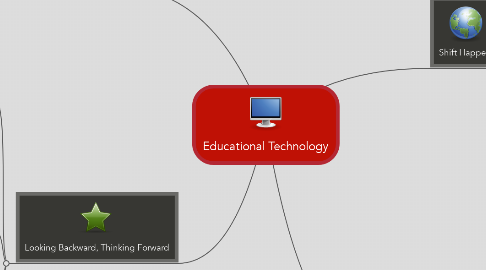
1. 3 Phases of Educational Technology
1.1. "Any teacher that can be replaced by technology deserves to be." -David Thornburg
1.2. Phase 1
1.2.1. Dynamic presentation that replaces chalkboards and whiteboards and overhead projectors
1.3. Phase 2
1.3.1. Textbooks are replaced by technological access to content knowledge
1.4. Phase 3
1.4.1. Infusing classroom content with technology, students as teachers.
1.4.2. Content standards: Communication, collaboration, and creation.
2. Looking Backward, Thinking Forward
2.1. Early 1900's
2.1.1. Introduction of the projector.
2.1.2. Silent movies and radios used for supplemental classroom instruction are some of the first technologies used in classrooms.
2.1.3. One room country school houses.
2.2. 1950's - 1980's
2.2.1. AV Buildings.
2.2.2. Personal Calculators.
2.2.3. Overhead projectors.
2.2.4. Computers begin to pick up popularity as they become more personalized.
2.2.5. Software becomes more user friendly.
2.2.6. Begin to see more technology in classrooms.
2.3. 1990's
2.3.1. Portable technology (walkman radios, cassettes make way for CDs, etc.)
2.3.2. Technology becomes increasingly popular in classrooms with computers becoming more affordable.
2.4. 2000's
2.4.1. Technological boom. Technology is more readily available than every before and comes in many platforms (ie. social networking, cellphones, educational websites, etc.)
3. Shift Happens
3.1. Preparing for jobs that do not even exist yet.
3.2. 2006 College Graduates
3.2.1. U.S.: 1.3 million
3.2.2. India: 3.1 million
3.2.3. China: 3.3 million
